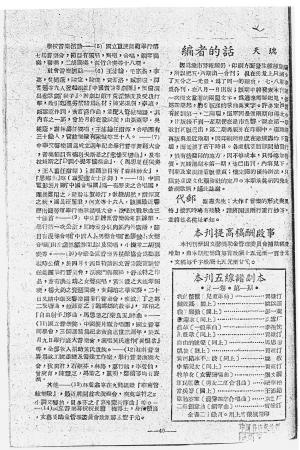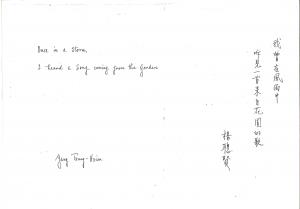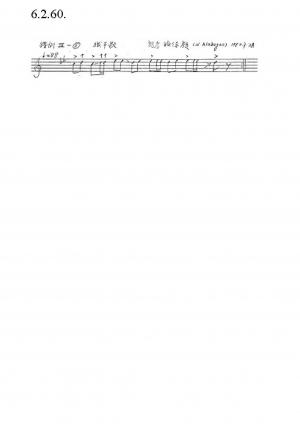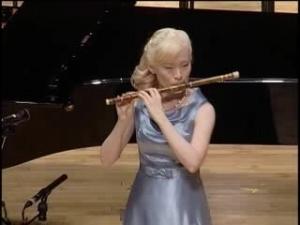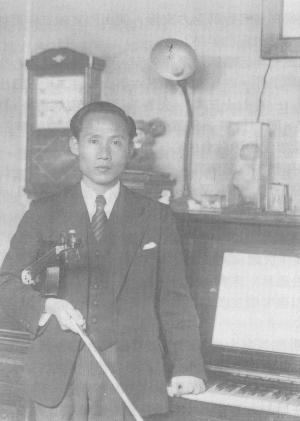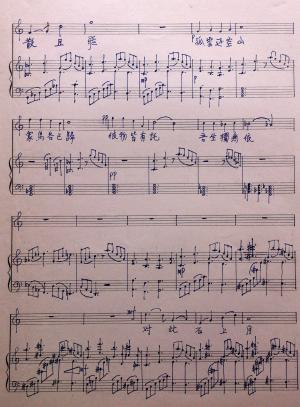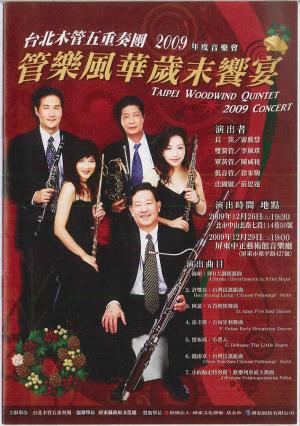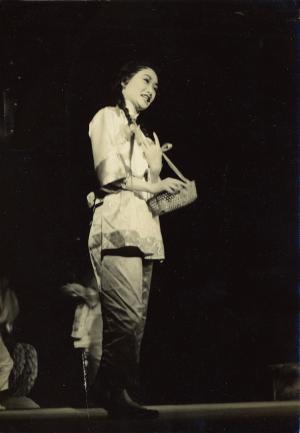風,土,歌
詳細資料
風者、風也,風土、歌謠也。風采、風度也。本曲嘗試藉由各種人聲與音樂素材來表現「風」的具象音響,風土人文積澱之台灣原住民與漢族傳統音樂素材的重層交織,以緬懷畢生奉獻於本土音樂之採集、研究與創作的師長們,並隱喻台灣的族群歷史與大自然生態憂患。在作曲技術上,這首曲子主要是以台灣布農族著名的《祈禱小米豐收歌》(Pasi but but)的五聲堆疊構造和人聲在緩慢遞移中不斷地「尋求和諧、重建和諧」的人類學隱喻為出發點,將以下幾種不同的音響素材:布農族的弓琴節奏和《飲酒歌》的曲調,嘉義民謠《六月田水》和《一隻鳥兒哮救救》的曲調,以及這兩首民歌共同具有的小三和弦旋律細胞,藉由對位與卡農手法予以縱向堆疊和橫向擴展、讓它們急促地交織前行。風中沉實地低嗚的人聲象徵著大地與素樸的原民世界,當風聲形變為飄蕩於空中的音調之後,迅遠地不斷加入新要素的音響織體,更彷彿象徵著近現代台灣歷史變遷過程中,逐漸形塑而成的既動態又多元的複雜文化樣貌。In the work "Le vent, la terre et le chant", the composer tries using counterpoint and canon to combine some materials of Taiwanese folksongs including the famous "Pasi but but" (Praying for Abundant Millet Harvest) of the aborigine Bunon, with the melody of "Drinking Song" and the rhythms of "Musical Bow", as well as "The Field Water in June" and "A Bird Crying for Help" of the Fulau people, with the common melodic cellule of the minor triad. The piece presents two kinds of time in Taiwan: the calm and static one of the aborigine and the dynamic, metamorphosing one of the modern people. In some way, it symbolizes the immigrating history of Taiwan and warns the environment deterioration in the Formosa. It was written in memory of those great Asian composer- musicologists, like Hsu Tsang-Houei and Jose Maceda.
當代創作
許常惠音樂創作獎、聲樂、二獎
2006許常惠音樂創作獎

